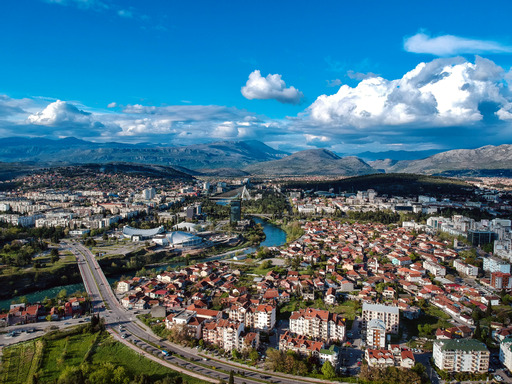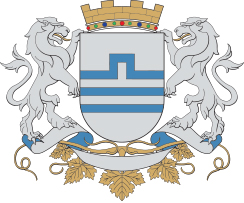Current events
25.09.
2020.
Announcment: Press conference on th...
25.06.
2020.
A new manifestation “Podgorica Fitn...
25.06.
2020.
Press conference on the occasion of...
Podgorica
The city I love
Podgorica is situated in the northern part of the Zeta Valley, in the centre of Montenegro, at the junction of several major road routes leading from the sea towards the continental part of the country. It is located at an altitude of 44.5 m. Its geographical position is 42.26° N and 19.16° E.

Natural Features
The large number of underground water flows makes this area well known for its healthy drinking water. The Rivers Morača and Ribnica, which cross the city in the directions north–south and east–west respectively, represent a special value and a beauty of nature.
Limestone river beds, rock ledges, caves, and unique canyons, through which clean and clear rivers flow, with plenty of beaches, rapids, bends, and vortices remain long in the visitor’s memory. Podgorica is also surrounded by lush vineyards called Ćemovsko, Lješansko, and Doljansko.
Climate
The climate of Podgorica is affected by the Adriatic Sea, via the valley of the River Bojana and across Lake Skadar. Under the impact of the surrounding mountains, Mediterranean climate is changing in such way that Podgorica has a modified Mediterranean climate, characterized by warm and hot summers, and mild and rainy winters. Due to thermal impact of the Adriatic Sea, Podgorica has a high air temperature during the winter.
- The average annual air temperature in Podgorica is 16.4° C, with a maximum of 40.7° C, and a minimum of −4.6° C.
- The average annual rainfall in Podgorica is 1,544 mm, and its relative humidity is 59.6%.
- The average number of rainy days is 118, there are three snowy days, and 58 days with strong winds.
Summers in Podgorica are extremely hot and long. There are around 135 summer days, in which the air temperature reaches or exceeds 25° C. Plenty of sun and warmth, a relatively small number of days with precipitation, sufficient relative humidity and good ventilation constitute the basic climate characteristics and categorise Podgorica as an area with a pleasant climate.
Territory and population
Estimates of number of inhabitants of the Statistical Office indicate that in the middle of 2019 189,260 inhabitants lived in Podgorica, which represents 30.43% of the total population of Montenegro.
The gender structure of the population according to the 2011 Census data (including the Municipality of Tuzi), indicates that the total population is made up of 48.7% men and 51.3% women.
According to the 2011 Census Podgorica has the following population:
57.35% – Montenegrins,
23.26% – Serbs,
5.13% – Albanians,
2.22% – Muslims,
2.14% – Roma,
1.98% – Bosniaks.
Other nationalities are represented by less than 1% of the total population of Podgorica.
History
The City of Podgorica is located at the intersections of several major roads, which run along the basins of the Rivers Zeta, Morača, and Cijevna, into the valley of Lake Skadar and near the Adriatic Sea, in a fertile plain with favourable climate conditions. This area has always been very suitable for the establishment of human settlements since ancient times, and thus settlements existed here even in prehistoric times. The oldest remains of material culture in this area belong to the late Stone Age. Further development have enabled the appearance of organised human settlements that will survive numerous events.
In the Illyrian period, in the area of the Zeta-Bjelopavlići valley there lived members of two Illyrian tribes – the Labeati and Docleati, which influenced in the most direct way the establishment of the tribes of that time. The Labeati inhabited the area from Shkodra in Albania to today’s Podgorica. They had their own fortress Meteon, known today as Medun, and a developed organisation of life, in particular their military. The Docleati also inhabited the Zeta Valley, and experienced fast economic growth due to the fertile plain and favourable position in terms of geography and roads. Their main settlement was Doclea. The city was situated around three kilometres northwest of today’s Podgorica. Urban Doclea was adjusted to the configuration of the terrain. For that time, it was a big city with a population of 8–10,000, with all their basic communal issues resolved. The relatively dense population density in an area no more than 10 square kilometres was conditioned by its geographical position, favourable climate, economic conditions, and defensive positions, especially important at that time.















